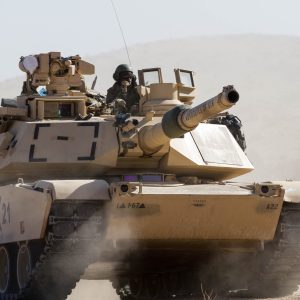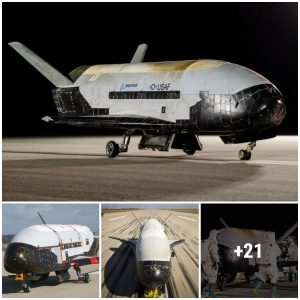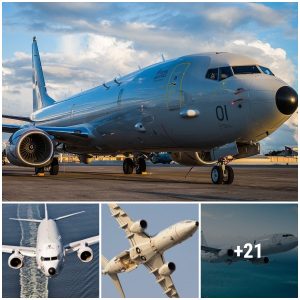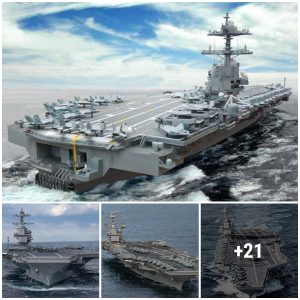US air force upgrading its B-52 bombers:- The B-52H, the oldest and most useful American heavy bomber, is finally getting its new engines, after using the TF33 since entering service. The new engines are expected to lower operating costs and extend the useful life of the B-52H into the 2060s, meaning these aircraft will have served for a century.

The new engine is the Rolls Royce F130, the military version of the BR700. The BR700 weighs the same (two tons) as the current B-52 engine and over 3,700 have been built since 1995. Some BR700s replaced the TF33 on civilian aircraft but most sales were for new long-range twin-engine business jets. Many of these, like the Gulfstream 500/550, have been used in twin-engine versions of the American four-engine AWACs based on the B-707 air transport. An updated version of the current TF33 engines for the B-52H was proposed, but the air force determined that BR700 was a major upgrade of RF33-type engines, which were losing market share to these new designs.
US air force its B-52 current engine:

The current TF33 engine is the military version of the JT3D still used on civilian aircraft and is still in production with over 8.600 RF33/JT3Ds built since 1958. The only remaining customers (for replacement engines) for the TF33 are the B-52H and the E-3 AWACS, which is based on the Boeing 707. The B-52 uses eight while the E-3 uses four. Despite regular upgrades, the basic design of the TF33 is getting old and, along the with aircraft it was used on (DC-8 Boeing 707 and military versions like the KC-135), these older four engine jets are being replaced by twin engine jets, often using BR700s, a design that design that is inherently more efficient and cheaper to operate and maintain.
US air force upgrading its B-52 bombers engine:-

The new engines cost about $4.3 million each and all 76 of the current B-52H aircraft and this replacement program will be completed by 2038. This contract includes 42 spare engines, for a total of 650. The air force has been seeking B-52H replacement engines for over two decades. Initial proposals called for replacing the eight engines on each B-52 with four larger turbofans as used on commercial aircraft for over fifty years. These larger and more recently introduced engines were designed to use less fuel, which became a major factor in the 1970s and ever since. The TF33s were tweaked to use less fuel and match other new user demands and this was enough to keep them in production. The TF33 is still less fuel-efficient than later designs like the F130 and the air force uses F130s in smaller transports because of that.

Another major factor in finally deciding to upgrade to an engine that has been around since the late 1990s was the growing use of computerized design of aircraft components and the ability to accurately test changes in aircraft using this software. Many modern civilian and military aircraft are designed entirely on computers and this has become reliable enough successfully to test proposed upgrades or design changes. This turned out to be a major factor is keeping the elderly B-52 going for so long. Designed in the 1950s, when it was all done on paper with slide rules or computers with less computing power than the average smart phone of today, more allowances had to be made for miscalculation.

Aircraft designers in the 1950s tended to heavily “over-engineer” their designs, especially military aircraft. Just how over-engineered the B-52 was, came to light when the air force began using these computerized design tools to design upgrades or repairs for the B-52. A lot of money was saved on upgrades when the actual sturdiness of B-52 components was measured using these new tools. This led to more affordable and reliable upgrades for the B-52 over the last decade. This included some major changes, like a new internal ωεɑρσռs bay rotary launchers that enabled B-52s to carry new guided (smart) bombs, and long-range missiles that were previously only suspended from the wings. That under-the-wing carrying capacity was discovered to be impractical when the air force discovered how over-engineered and sturdy the original wing design was. But one of the shortcomings of underwing ωεɑρσռs pylons was that for larger missiles this created a lot more aerodynamic drag during flight.

This increased fuel consumption, reduced flight endurance and caused wings to age more quickly. The internal rotary launcher meant for many missions you could keep the underwing pylons empty and obtain improved range and endurance while reducing stress on the airframe. These trade-offs are typical of any system, especially land, air and sea vehicles. Initially the new rotary launcher was able to carry eight large JDAM smart bombs. Later upgrades allowed the rotary launcher to carry JASSM (Joint Air-to-Surface Stand Off Missile) cruise missiles and MALDs (Miniature Air Launched Decoy) which looked like small aircraft and are used as decoys or carry jammers to confuse enemy radars.

The internal rotary launcher became possible as B-52Hs were upgraded to use GPS guided (smart) bombs and that upgrade included major upgrades to the aircraft electronics. This meant new radars and an all-digital cockpit. This was known as the “glass cockpit” because all the old analog indicators were replaced by a few flat screen displays. The new electronics enabled the B-52H to use satellite communications and the Sniper targeting pod. Targeting pods enabled fighter or bomber pilots to get a close look at what was on the ground while still high enough (6,4000 meters/20,000 feet) to be immune to most ground fire. The new electronics also included improved warning of enemy SAMs (Surface to air Missiles) and jamming equipment to avoid getting hit.

Before the decision to replace the engines, B-52Hs were expected to remain in service until 2045. With the new engines, B-52s would maintain their status as the least expensive heavy bomber to operate. It held on to that record until 2011 when the upgraded B-1B pulled ahead for a few years while B-52 operating expenses increased. After that the B-52H was able to maintain its flight costs per hour while those of the B-1B began going up and currently both cost about $70,000 per flight hour. The B-1B is a 1980s design that did not age as efficiently as the B-52H it was designed to replace. Now B-1Bs are being retired and all will be gone from active service by 2036. The air force is building a new, less expensive to build and operate B-21 stealth bomber to replace the existing B-2 stealth bomber which was so expensive that only 21 could be purchased. The B-2 cost nearly twice as much per flight hour as the B-52H.

If the air force can achieve its goal of lower development and manufacturing costs, they will be able to buy at least a hundred B-21s. The first of these is expected to enter service by 2030 and for the next two or three decades it will serve along the B-52H, but not as a replacement for it. Nothing can replace the B-52H because it was a sturdy design that proved very adaptable to new technologies, especially the smart bombs. These had been around since the 1970s using laser guidance but the major revolution came with JDAM, which showed up three decades ago, was far more effective than expected and much cheaper than the 1970s laser guided bombs.

The B-52H was the perfect “bomb truck” once it could handle JDAMs. One B-52H in the air could handle ground support for large areas, like all of Iraq or most of Afghanistan and provide the ground troops with reliable 24/7 close support. There were proposals to replace the B-52H with military or commercial transports converted into bomb trucks. These proposals were too expensive when the over-engineered B-52Hs kept flying. Like the DC-3/C-47 twin engine transport, which is closing in on a century of service, mainly as a commercial transport, the B-52H is a unique warplane that is doing the same thing but as a competitive warplane from the beginning.





